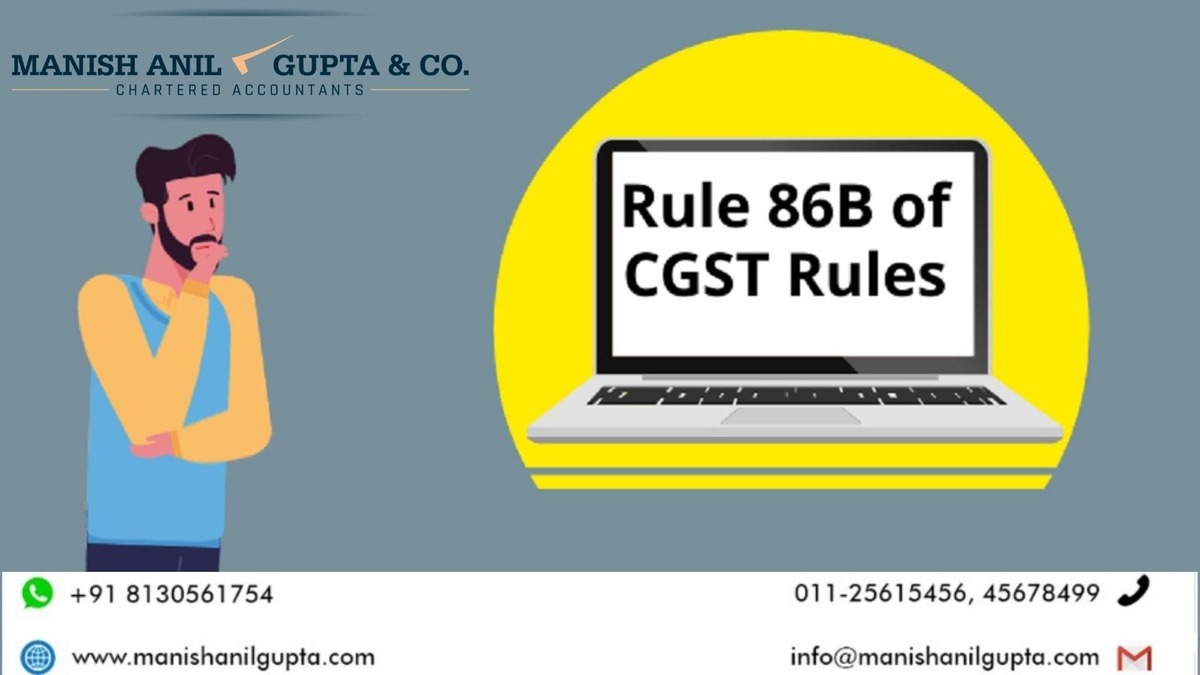Introduction
The CG introduced a new rule in
CGST Rules 2017 termed Rule 86B vide
Notification No. 94/2020 – Central Tax, dated December 22, 2020, to curb the ongoing fake invoices transactions. It provides restrictions on the use of ITC to discharge the output liability, with effect from
January 1 2021.
Meaning of Rule
The registered person shall not be able to use the amount available in his electronic credit ledger to discharge liability towards output tax above 99% of such tax liability, in case where the value of taxable supply
other than exempt supply & zero-rated supply,
in a month exceeds Rs. 50 lacs. This Rule has a disregarding effect on all other CGST Rules.
Applicability of the Rule
The said Rule will be applicable only if turnover
other than exempted and export turnover is more than Rs. 50 lacs in a month. The limit is examined every month before filing each return.
Exceptions to the Rule
- If a registered person has paid income tax amounting to more than Rs. 1 lac in the preceding 2 FYs, Rule 86B will not be applicable.
- If any registered person has received a refund of above Rs. 1 lac in the preceding FY, then the refund of unutilized ITC towards zero-rated goods or services or Rule 86B would not be applicable.
- Exporters claiming refund of ITC on export or inverted duty structure of more than Rs. 1 lac in preceding FY shall not be hit by Rule 86B.
- Suppose a registered person under concern has discharged his liability towards output tax by electronic cash ledger for an amount over 1% cumulatively of total output tax liability upto said month in the current FY. Therefore, while filing return for each month, taxpayer has to keep track of whether his cumulative discharge of tax liability of output tax through electronic cash ledger is more than 1% upto month of filing of return.
- If the registered person under examine is any of the following:
- (a) Government Department
- (b) Public Sector Undertaking
- (c) Local and Statutory Authority
ITC utilization allowed before Rule
ITC holds an essential role in GST by avoiding cascading effect of taxation. The order of utilization of ITC for different components like CGST, SGST and IGST has gone through many changes. However, ITC accessible in the electronic credit ledger can be fully utilized for releasing the output tax liability. The new Rule has restricted the use of ITC balance for paying its output tax liability.
Impact of the Rule
(a) After examining aforesaid restrictions and exceptions introduced by Rule 86B, it is clear that said Rule applies only to the large taxpayer.
(b) There will be no impact at all micro and small business, under said Rule it is clearly stated that said Rule is to control issue of fake invoices to use the ITC to discharge the liability.
(c) It restricts fraudster from showing high turnover without having any financial credibility.
(d) Restrictions imposed by said Rule will further increase the compliance burden for taxpayers.
However, CBIC has clarified that the 1% of the tax liability will always remain unveiled for which refund will not be granted. The Rule provides various exemptions like exporters, suppliers of inverted duty structure, and taxpayers having a footprint in the Income Tax.
In conclusion, the introduction of Rule 86B in the CGST Rules aims to curb fake invoice transactions and restricts the use of ITC for discharging tax liability. While it primarily affects large taxpayers, exemptions are provided to exporters and those with a significant income tax footprint. The rule enhances compliance but also poses additional burdens on taxpayers.
Stay informed about the new CGST Rule 86B and its impact on ITC utilization. Join our blog to understand the restrictions, exceptions, and compliance burden, ensuring you navigate these changes effectively. For more query, mail us at:
info@manishanilgupta.com
Disclaimer:The information given in this article is for general guidance to the readers. This information should not be sought as a substitute for legal opinion.


0 Comment